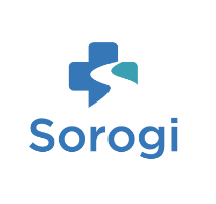One Community, One Fight: Breaking Barriers in Diabetes Care
Every November, we recognize Diabetes Awareness Month as a time to reflect, educate and take action. This year, Sorogi is shinning a light on a truth that often overlooked: diabetes is not just an individual condition, but it’s a community issue.
Community has always been a broad and yet narrow word. It describes and emulates the overarching point of togetherness and unity. However, this month as we address the complexity of diabetes, I want us to deeply steepen our resolve for breaking barriers and that ultimately it starts with us. At Sorogi, our theme, “One Community, One Fight”, reminds us that the fight against diabetes is a collective one. From local health educators to families, from churches to clinics, we all have a role in building a healthier community.
Now we have to talk about the barriers and what does that that look like nationally. To be clear, diabetes does not affect everyone equally. Across neighborhoods, cities, and nations, barriers such as limited healthcare access, low health literacy, economic inequality. an even cultural stigma prevents many from receiving the care and support they need.
Barriers could be:
Access to Care
Millions of people in areas where medical assistance is difficult to reach. Routine screening, nutrition counseling and medication management may be out of reach for those who may need it the most.
Health Literacy Gaps
Managing diabetes truly involves understating complex Information. This can include blood glucose levels, medications, diet and exercise. When this information is not presented in culturally relevant or even an easy-to-understand way, people can get left behind.
Social and Economic Inequities
Healthy food options, safe environments for exercise, and consistent healthcare are often privileges and not guaranteed. These systemic gaps continue to widen diabetes disparities in underserved populations.
Stigma and Cultural Perceptions
In some communities, diabetes is viewed as a personal failure rather than a healthy condition. This stigma discourages open conversation and early intervention.
While the challenges are real, so is our collective power. Communities are the heartbeat of health equity. When people unite around education, advocacy, and compassion, change happens. When people unite around, education, advocacy, and compassion, change happens.
Community Health Workers
Bring care to the doorstep by bridging trust between patients and the healthcare system
Faith-based groups
Local organizations can advocate for better access to nutritious foods and safe recreational spaces
Local organizations
Can advocate for better access to nutritious food and safe spaces
Family and friends
Can make small everyday changes such as cooking healthier I meals together, walking after dinner, and checking in on loved ones living with diabetes.
Each of these actions, no matter how small, creates ripples that strengthen the fight against diabetes.
Sorogi invites everyone to join the movement:
Listen to community voices
Learn about diabetes and the barriers that exits
Lead by example through education, advocacy and most importantly empathy
This Diabetes Awareness Month, let’s remind the world that no one should have to fight diabetes alone. Together we can build a future where everyone person, in every community has access to the care and support that they serve.


